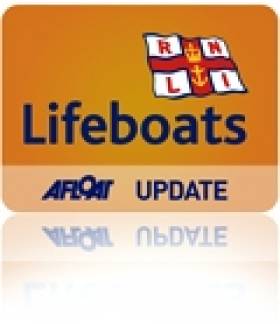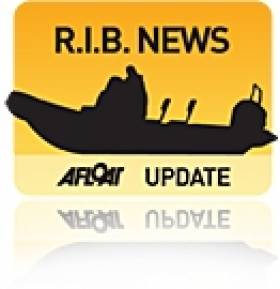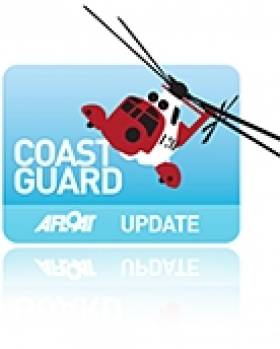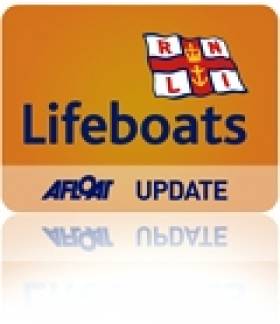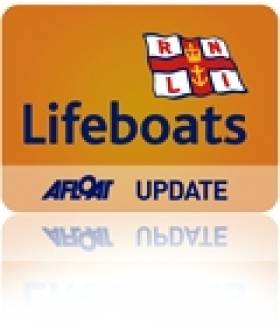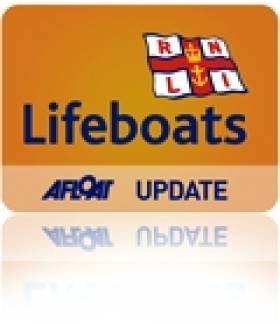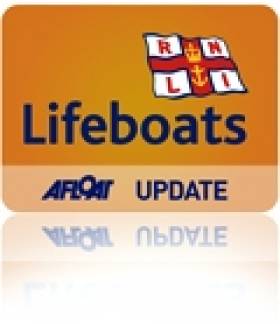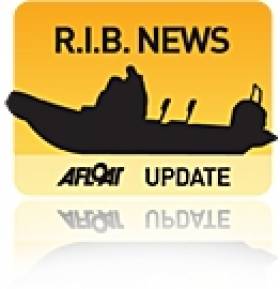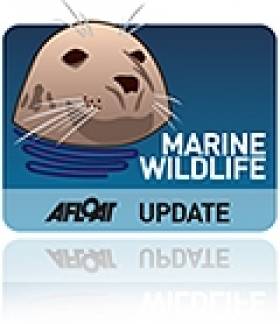Displaying items by tag: Red Bay
Red Bay Lifeboat Join in Search for Ballycastle Woman
The volunteer lifeboat crew assisted in an intensive shoreline search today along the coastline around Ballycastle from Fair Head to Kinbane head.
The lifeboat was joined in the shoreline search by local Coast Guards and the Police helicopter in the search, which lasted several hours.
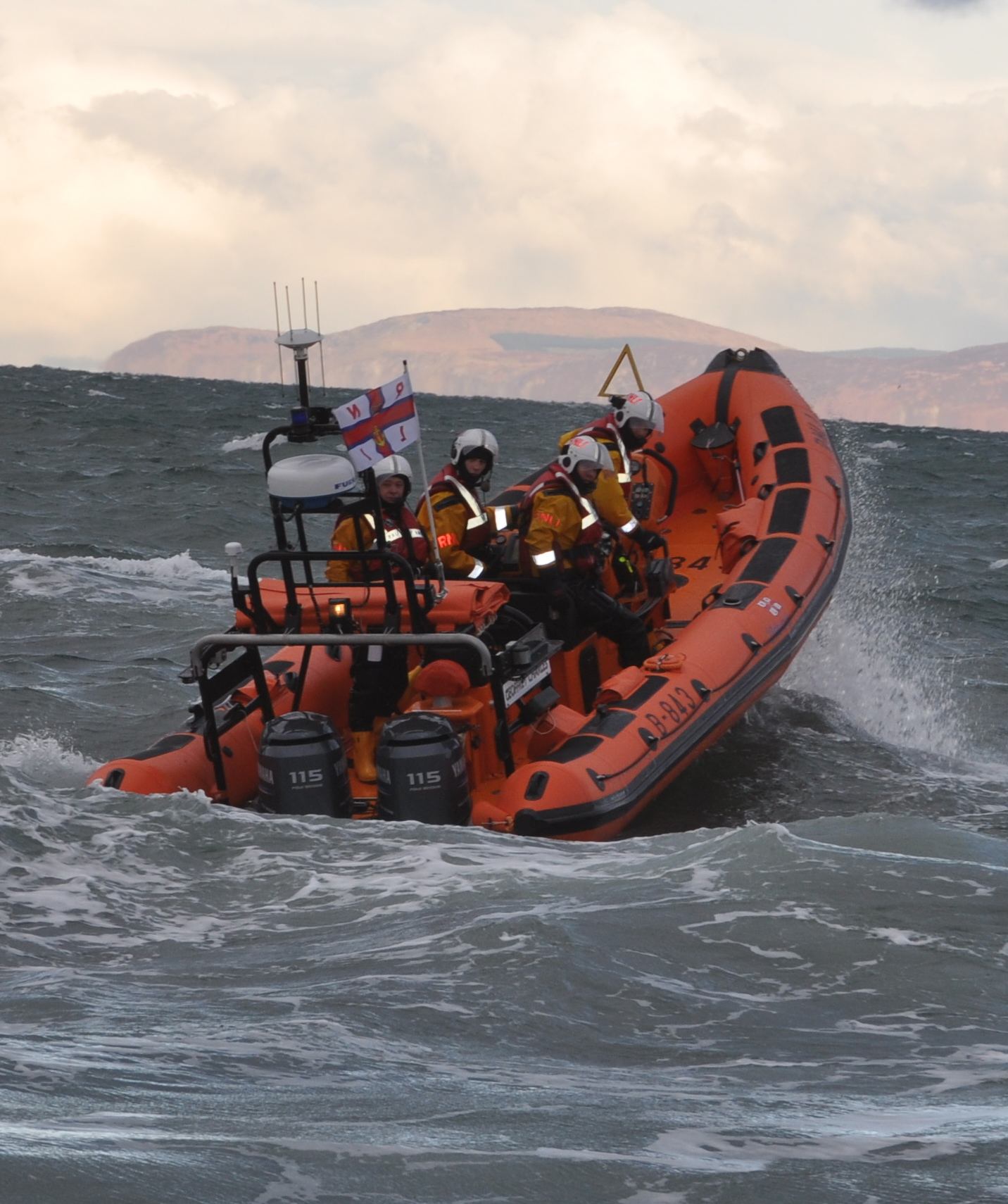
Red Bay RNLI Lifeboat searching near Ballycastle
Weather conditions for the search were difficult with strong gusty winds.
Nothing was found in the operation, which lasted several hours.
The search continues throughout the Ballycastle area.
Red Bay RIBs Enjoy Trip to Ardbeg Distillery (Video)
Last year the fleet encountered stormy force eight conditions but this year the weather was kind and most of the Redbay fleet were soon tied up in calm conditions and the flotilla headed for the Old Kiln Cafe. Drams of Ardbeg waited on a table for everyone at the door. One boat didn't get there due to mechanical problems. It was towed into Rathlin Island and picked up on the way home.
A traditional music band played and after lunch the group was treated to a tour of the Distillery. A great day for this group of Northern Ribbers.
DSC Alert Sends Rescuers Straight to Scene of Sinking Vessel
The digital selective calling (DSC) alert requesting immediate assistance was received at just after 8.15pm. Using AIS and DSC the vessel was located just off Runabay Head and identified as the Katoni. RNLI lifeboats from Redbay and Larne were sent to the scene whilst the police helicopter flew overhead. Ballycastle Coastguard Rescue Team were also sent to the scene to assist.
The area was thoroughly searched and no vessel was found. At just after 9.30pm a 999 call came in from one of the three crew to say although the vessel had been taking on water they had made it safely to shore.
Belfast Coastguard Watch Manager Alan Pritchard said;
"The crew of this vessel was extremely well prepared. They were wearing lifejackets, had a DSC radio and knew how to use it. Because of this they were able to call for immediate assistance and although they couldn't actually talk to us we knew where they were and that they needed help. They also had the presence of mind to let us know that they had reached the shore safely so we were able to call off the search."
Geoffrey was a scuba diving instructor and working in Thailand when the devastating 2004 tsunami struck the island of PhiPhi. He helped save many lives during that time by recovering people from the water and bringing the injured for urgent medical assistance. He also returned to the area to help bring comfort to many families who had lost loved ones by helping to get official identification for those lost in the tsunami. Sadly Geoffrey died shortly after this at the age of 32 and his parents wanted to do something to recognise the work he did in saving lives. Along with other projects they have funded this Atlantic 85 lifeboat in Geoffrey's name.
During the ceremony Roger spoke about Geoffrey and the reason they funded a lifeboat in his memory. "It is very fitting given that Geoffrey saved people from the sea that we are here today to dedicate and hand over this Atlantic 85 to the Red Bay station in Geoffrey's memory. In the same way that he saved people from the sea we are confident that those trained and skilled with this craft will carry out the same courageous acts and rescue people around these shores.
This project has given us something positive to focus on and we wish to stay in very close contact with the station. Geoffrey loved the sea and the natural environment and when we first saw this lifeboat we knew it would be like him – big, powerful, a little bit noisy and very confident. From our very first visit to Red Bay we knew that this was the place for the lifeboat to be stationed in his memory."
In another special tribute well known singer Frances Black, whose father was from Rathlin Island spoke of her love for the area and thanked the Colmers for their gift in Geoffrey's memory. Frances said, "When we were children we used to spend a lot of time up and around this area travelling back and forth on the seas around Rathlin Island. When we were young we thought it was really exciting that the waves were the size of houses but as we got older we became very aware that the seas were quite treacherous in this area, beautiful as it is.
The RNLI have saved many lives up and around this area. To save one life is a miracle but to save the amount of lives they have is fantastic. The work the volunteers do and the dedication that they have is absolutely phenomenal. I would like to say a very special thank you to both Judith and Roger. It is very important we remember the legacy that Geoffrey has left on this wonderful day. He would be so proud of his family and of what they have done today."
Frances then gave a beautiful accapella rendition of the well known song Bright Blue Rose, which she dedicated to Geoffrey.
Red Bay Lifeboat Operations Manager Alan Murphy accepted the lifeboat into the care of the station, "The lifeboat is the main piece of equipment provided by the RNLI and in many cases this is thanks to the generosity of people like Rogerand Judith Colmer, to whom we are extremely grateful. We at Red Bay are very proud of our new lifeboat and will keep the boat well maintained and always ready to launch when requested."
The lifeboat was named with a bottle of champagne poured over the side of the boat. The honour was carried out by Judith and Roger's grandson Edward.
Red Bay RNLI Station Name New Atlantic 85 Lifeboat
Red Bay RNLI lifeboat Station names its new Atlantic 85 Lifeboat the 'Geoffrey Charles' next month on Saturday, May 28th.
The busy lifeboat station was in action as recently as Sunday 17 April 2011 when RNLI lifeboat volunteers saved two men after their vessel capsized off the North Antrim Coast.
The two men were on passage from Ballycastle to Scotland in a 9 metre landing craft. Their cargo shifted resulting in the vessel capsizing throwing the two men into the water. More on that Red Bay Lifeboat rescue here.
The new lifeboat will be named at 3.30pm at the lifeboat station and there will be celebrations afterwards at Cushendall Sailing and Boating Club.
Related Safety posts
RNLI Lifeboats in Ireland
Safety News
Rescue News from RNLI Lifeboats in Ireland
Coast Guard News from Ireland
Water Safety News from Ireland
Marine Casualty Investigation Board News
Marine Warnings
The two men were on passage from Ballycastle to Scotland in a 9 metre landing craft. Their cargo shifted resulting in the vessel capsizing throwing the two men into the water. The alarm was raised shortly after 7am.
Red Bay RNLI Lifeboat crew located the men who had been in the water for over an hour two miles east of Torr Head. The men who were suffering from shock and Hypothermia were taken to Cushendall by the Lifeboat were they were met by an ambulance crew and taken to Antrim hospital.
Commenting on the rescue Red Bay RNLI lifeboat helm Paddy McLaughlin said, "The two men had been in the sea for over an hour and were feeling the effects of it as the lifeboat crew arrived. We administered first aid at the scene and transferred the casualties to shore immediately where they were met by ambulance."
This is the second callout for Red Bay volunteer lifeboat crew in 24 hours. Two divers were recovered from Cushendun yesterday afternoon after they got separated from their dive boat.
Red Bay Lifeboat Crew Provide First Aid to Collapsed Man at Fair Head
Lifeboat crew with Red Bay RNLI put their first aid training into practice this afternoon when a man collapsed while out walking in Boulder Field at Fair Head in County Antrim. The two lifeboat crew had to scale 150 feet of rocky headland to reach the two men who had been out walking and to administer first aid to the casualty.
Red Bay RNLI lifeboat was launched at 3.55pm to the incident and on arrival at the scene the lifeboat crew were able to locate the two men among the rocks. Two lifeboat volunteers left the lifeboat with first aid equipment to give assistance to the casualty. However to reach the men they had to climb 150 feet up the rocky terrain. The Royal Navy helicopter Rescue 177 from Prestwick arrived a short time later with a paramedic and was able to stabilise the casualty and winch both him and the other man aboard and bring them both to Coleraine Hospital.
Commenting on the callout Red Bay RNLI lifeboat helm Paddy McLaughlin said, " Thankfully we are very familiar with this area and two of our lifeboat crew were able to use their first aid training and go to the assistance of the casualty. This is not an easy area to access and the two men had been out walking since breakfast."
Last August Red Bay RNLI lifeboat crew brought a brother and sister to safety when they got into difficulty among the rocks at Fair Head.
Additional report from HM Coastguard
TWO MEN STUCK ON CLIFF AT FAIR HEADAt 3.50 pm this afternoon, Coleraine Police were in touch with Belfast Coastguard earlier this afternoon to inform them about two men stuck on a cliff at Fair Head in Northern Ireland.
Both were wearing high visibility jackets whilst one man is aged 46, the other 52. The first informant, the younger man, suggested that the elder of the two men was in a state of collapse with vertigo and needed urgent attention.
The Ballycastle Coastguard Rescue Team were immediately turned out along with the Red Bay RNLI inshore lifeboat. A rescue helicopter – R177 – from Prestwick was also scrambled.
The position of the two men was given as near Murlough Cottage Caravan Park and that they were halfway up the rocks.
The weather was cold with high and clear skies at the time. When rescue units arrived on scene the two men could be seen wearing warm jackets and spotted halfway between the cliff base at Fair Head and the shore in heather and rocks. They were in a sheltered position.
By 4.30 two RNLI lifeboat crew had come ashore and made contact with the two and was administered first aid to the older man, and by 5.15 both casualties had been taken in to the helicopter, one by stretcher, and were transferred to Coleraine hospital.
The hospital landing site was also manned by the Coleraine Coastguard Team to assist in a quick transferal of the casualties into A&E.
Belfast Coastguard Watch Manager Steve Carson said
"We understand that the two men were out for a walk and became disorientated. Fortunately one of them had a phone on him and was able to get a signal to alert the emergency services.
"Do please check the weather before you set out and make sure you have sufficient supplies if planning an extended trip. For any emergencies on the cliffs, rocks beaches and seas around the Northern Ireland coastline please dial 999 and call the Coastguard."
Related Safety posts
RNLI Lifeboats in Ireland
Safety News
Rescue News from RNLI Lifeboats in Ireland
Coast Guard News from Ireland
Water Safety News from Ireland
Marine Casualty Investigation Board News
Marine Warnings
Fancy a New RIB? Here's Your Chance....
The firm will have special offers on selected models to beat the UK's VAT rise.
Sea trials and demos will be available across the firm's Stormforce range as well as a wide range of secondhand boats on display
A 'self-righting' demonstration on the latest Stormforce 650 is also promised. This boat is fitted with twin Suzuki DF90's with immersion proof hoods.
Demo's will be available on each of the boats at the following time slots on Saturday and Sunday:
11:00 - 13:00 6.1 - 650
14:00 - 16:00 7.4 - 8.4
16:00 - 18:00 1050 - 11
If you would like to book a demo on one of these boats please contact Red Bay on 028 2177 1331 or email [email protected]
Antrim's Red Bay is Marine Protection Area
The area was chosen because it contains rare species that are in danger of becoming extinct.
The new marine protection area restricts human activity to protect living, non-living, cultural, and/or historic resources.
Protections in various areas range from limits on development, fishing gear types, fishing seasons, catch limits, moorings, to complete bans on removing marine life of any kind.
It is understood Red Bay is a nursery ground for many commercial fish species.


























